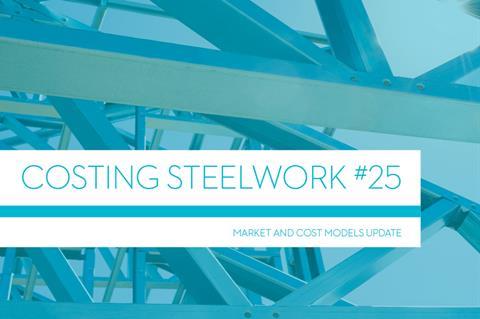- News

All the latest updates on building safety reformRegulations latest
- Focus
- Home
- News
- Focus
- Comment
- Events
- CPD
- Building the Future
- Jobs
- Data
- Subscribe
- Building Boardroom
Costing Steelwork 25: Market update
Sponsored by Steel For Life

A market update from Aecom, BCSA and Steel for Life that provides guidance on costing structural steelwork

Construction new work output increased by over 2% in the year to Q1 2023, according to the latest data release from the Office for National Statistics. All sub-sectors recorded expansion over the 12-month period to Q1, underscoring the resilience of activity across the industry in the early part of 2023. The only exception to this was public sector housing, which saw a reduced volume. Repair and maintenance work posted very strong growth at almost 8%. This is significant as the repair and maintenance sub-sector is an important and meaningful contributor to overall industry workload. Ongoing higher volumes here add to workforce pressures elsewhere in the industry, and their corresponding influence on other market dynamics.
The industry’s largest sub-sector – private housing – declined by 7% since its peak output in Q3 2022, indicating that this sub-sector is slowing materially now. Yet looked at another way, and measured against historical output trends, private housing continues to record substantial output volume each quarter. This said, the outsize influence of private housing activity and any adverse changes will impact headline data measures. Nominally, there is still good industry output at an aggregate level, which the various industry sentiment surveys reflect. As a result, construction sector sentiment continues to hold a position at or around its long-run average.
Two contributing factors to this prevailing view across the industry – output volume, albeit slowing in some sub-sectors, and the industry’s enduring supply chain constraints – are combining still to create the feeling that the industry remains busy more or less. The most revealing aspect of latest sentiment surveys is the mixed picture that they report. Whereas for a long time most sectors have moved with the same trend direction, now momentum is adjusting across sub-sectors. The construction sector overall continues to offer sound workload, especially for those supply chain firms that can work across sectors.
Read more…
Already registered? Login here
To continue enjoying Building.co.uk, sign up for free guest access
Existing subscriber? LOGIN
Stay at the forefront of thought leadership with news and analysis from award-winning journalists. Enjoy company features, CEO interviews, architectural reviews, technical project know-how and the latest innovations.
- Limited access to building.co.uk
- Breaking industry news as it happens
- Breaking, daily and weekly e-newsletters
Get your free guest access SIGN UP TODAY

Subscribe now for unlimited access
Subscribe to Building today and you will benefit from:
- Unlimited access to all stories including expert analysis and comment from industry leaders
- Our league tables, cost models and economics data
- Our online archive of over 10,000 articles
- Building magazine digital editions
- Building magazine print editions
- Printed/digital supplements
Subscribe now for unlimited access.
View our subscription options and join our community


















